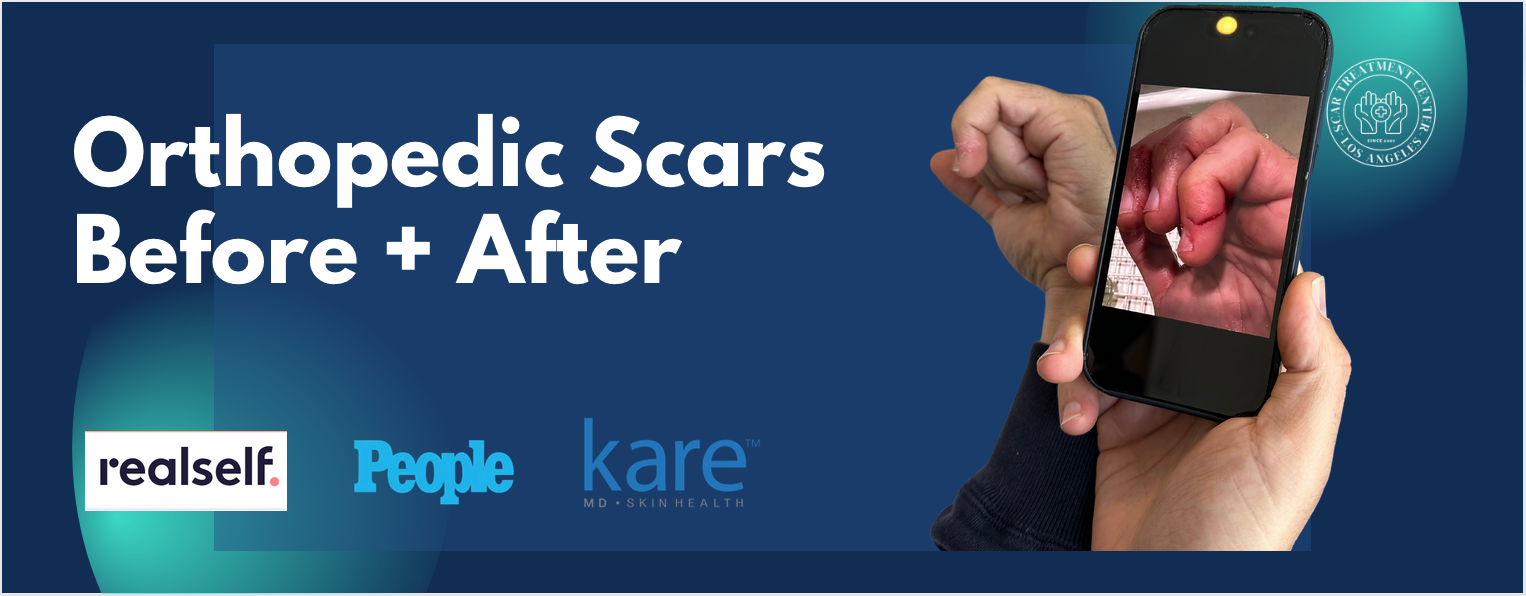Orthopedic surgery is performed to treat muscle, ligamentous, and bone injuries on the extremities. Many of these surgeries involve incisions close to or on joints of the arms or legs. The development of keloid, hypertrophic, and atrophic scars are quite common after orthopedic surgery. Our Los Angeles plastic surgery office focuses on scar management after orthopedic procedures including foot and ankle surgery, hand and wrist, surgery, joint replacement, orthopedic trauma, shoulder surgery, spine surgery, and sports medicine procedures.
There are many different types of scars that occur after orthopedic surgery, and keloid and hypertrophic scars are the most common. Depending on the degree of inflammation, keloid and hypertrophic scars require early attention in order to mitigate collagen formation. Scars may result from normal wound healing, but may cause discomfort, pain, functional impairment, fibrosis, and joint mobility issues.

Dr. Raffy Karamanoukian at Kare Plastic Surgery in Los Angeles has developed protocols to improve orthopedic surgery scars, whenever possible. These protocols for scar therapy may include laser, radiofrequency, scar modulation, topical creams, intralesional, injections, and surgical scar revision. Our approach minimizes the length of recovery and utilizes lasers whenever possible as an alternative to surgery.
Keloid Scars
Keloid scars are formed in patients who are genetically predisposed to inflamed keloid formation. The scars grow beyond the original footprint of injury and may cause severe pain, itching, burning, and incision discomfort. If keloids progress, they may cause debility as the scar fibrosis begins to encompass the original incision. We use a combination of lasers and surgical treatments in order to remove keloid scar formation, and reduce recurrence rates.
Hypertrophic Scars
Hypertrophic scars along an incision-line can limit the function of a joint after orthopedic procedures. These scars have less inflammation than a keloid, but may still progress beyond the original confines of the incision. Hypertrophic scarring can occur on any skin type and can be reduced with scar modulation protocols to improve texture, contour, and thickness of your scar. Orthopedic incisions are vulnerable to hypertrophy as the constant mobility of the joints may increase tension on a wound.
Atrophic Scars
Atrophic scars can occur when there is an indentation in the original soft tissue along an incision line. An experienced plastic surgeon can help reduce the atrophy of the scar and improve the overall color, skin texture, and contour of the skin . Laser therapy is ideal for atrophic scars, in addition to scar revision and fat transfer.
Since orthopedic procedures are typically performed within the vicinity of a joint, it is important to minimize tension in the after-care instructions. Scar modulation should begin with early application of a silicone scar gel such as Plato's Scar Serum and early intervention with laser therapy and scar modulation in order to reduce overall long-term scar formation.
Our Los Angeles plastic surgery office treats many different types of scars and we place particular emphasis on the management of orthopedic scars after surgery. Our board-certified plastic surgeons are available for virtual consultations online or in-office consultations in Los Angeles. Please call Kare Plastic Surgery at 310-998-5533.
Kare Plastic Surgery & Skin Health Center
Raffy Karamanoukian, MD FACS
Hratch Karamanoukian, MD FACS
804 7th Street
Santa Monica, CA 90403
(310) 998-5533